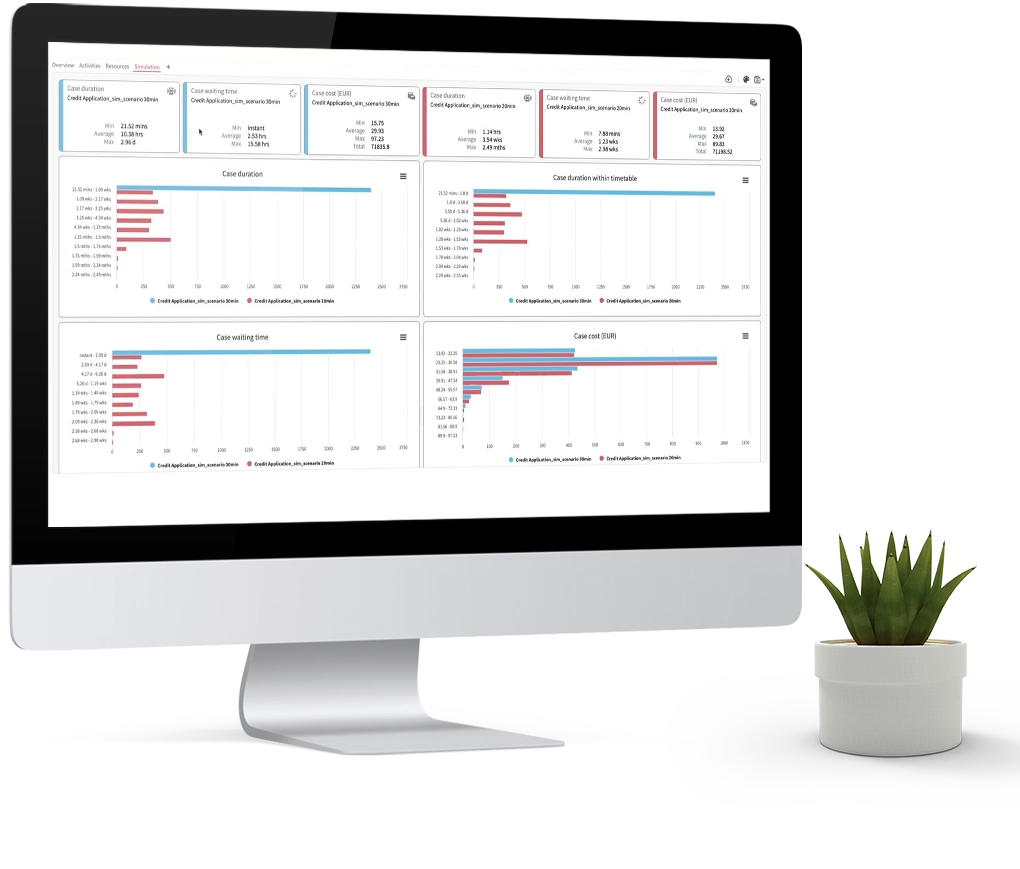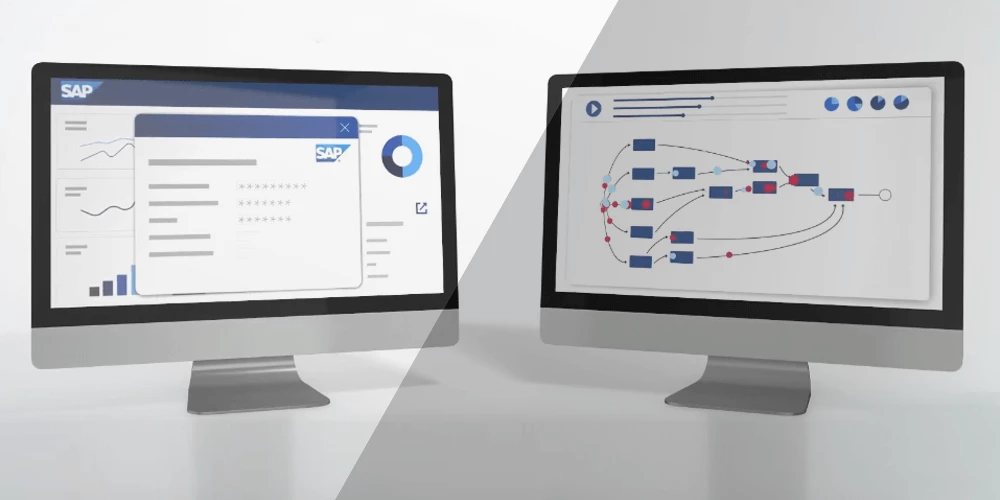Process Optimization with
BIC Process Mining
The advantages of process optimization are obvious: shorter processing times, fewer errors, higher quality, lower costs. But do you know the feeling when process optimization measures fall short of expectations or even come to nothing? With BIC Process Mining this will not happen to you! Make data-based decisions for process optimization that tackle the problem at its root and precisely resolve weaknesses.


Continuously improve processes
Being able to react proactively as well as flexibly to new requirements and changes is an important success factor for companies today. To ensure this, you need to continuously analyze your processes and adapt them to new requirements, customer needs or market changes. Process improvement is part of the process management lifecycle and describes the optimization process as well as the resulting improvement of a real running as-is process in the company. These as-is processes are visualized in BIC Process Mining and analyzed in terms of their performance. In this way, optimization potentials can be clearly identified and subsequently incorporated into a target process. Through further analyses and process simulations, the target process can be put to the acid test before it becomes the new as-is process.
Identifying optimization potential with variant analysis and conformance checking
Variant analysis serves as the basis for process optimization. It enables the simple comparison of several process variants and thus the discovery of process-related differences. Because process results often differ in reality and are rarely identical - but why? Why does it take two minutes to complete one process instance, but two months to complete another? Why is one sales employee more successful than his colleagues? Why do some processes take longer in summer than in winter? Variant analysis with BIC Process Mining provides the appropriate answers and helps not only to better understand the processes, but also to identify the decisive factors for a successful process run. For example, variants with a positive ending may include a certain process step, such as a personal contact, which does not occur in the variants with a negative ending.
As an optimization measure, this process step could then be built into the standard process. Another essential technique of process analysis is to check whether all processes are executed compliantly with respect to the prescribed guidelines. The compliance check in BIC Process Mining helps you to check compliance rules quickly and easily and to discover non-compliant cases. For this purpose, the actual process and the existing target model including the associated regulations are compared with each other. Where deviations can be identified, you should define a standardized process that is valid throughout the company and ensures that all compliance regulations are respected. This does not always have to be a specific task that is recorded as a rule on the process, but can also be, for example, the involvement of a specific person or the processing of tasks in a specific order.

"What if...?":
Simulations with BIC Process Mining
After identifying processes to be optimized using variant analysis, conformance testing or other analysis options, companies can initially use BIC Process Mining to test various simulation processes based on BPMN models before actually implementing them. These simulations can be used to assess what-if scenarios and evaluate the impact of potential changes in contextual factors and interventions. For example, you can simulate and analyze how adding another resource will affect the process run, whether a change will create new bottlenecks, and how the process will behave if more requests are made. In this way, you can find out which process change will give you the best results.
Customer Story:
Increase compliance, optimize customer processes and save millions
The claims handling process of insurance companies can sometimes be affected by highly individual procedures and many loops. In addition, there are internal compliance deviations that should be avoided. A large European insurance company was able to uncover 1,800 variants of a claims handling process through process mining - the processes, which were quite straightforward on paper, actually turned out to be highly complex and diverse. With the help of various optimization methods, compliance with internal guidelines was ensured, the customer process was simplified, and a total of 15 million euros was saved.

BIC Process Mining in practice: How to benefit from process optimization
BIC Process Mining provides business analysts with deep insights into process operations. With the tool's numerous analysis options, inefficiencies, bottlenecks and deviations are quickly identified and suitable optimization measures are derived. Companies benefit by this in many ways.

Increase efficiency & productivity
Inefficiencies can lead to significantly high costs, dissatisfaction on the customer and employee side, and less progress. To increase efficiency and productivity in the long term, it is therefore essential to uncover inefficiencies as quickly as possible and to optimize the affected processes. The following analysis aspects are particularly important:
- Identify expensive activities
- Detect repetitions in the process flow
- Look at total cycle time in detail
- Discover bottlenecks that extend the duration of the process
- Uncover transitions between activities that are characterized by particularly long waiting times

Improve quality & customer experience
Customer satisfaction is an important success factor and can be decisive in global competition. By identifying, optimizing and, at best, avoiding potential sources of error, you improve your quality and increase positive customer perception. Be aware of which points might attract negative attention from customers and filter them out in your analyses:
- Long duration of the entire process
- Long waiting times without regular feedback on progress
- Repetitive tasks
- Unclear, untraceable processes
- Process loops

Supporting Governance, Risk & Compliance
Policies are an increasingly important factor in a company's process landscape: Internal and external requirements and regulations determine how processes must run. With BIC Process Mining, you can ensure that all guidelines are complied with in practice. The tool offers you the following options for uncovering and optimizing undesirable or impermissible situations and procedures:
- Path filter: Apply the path filter and look closely at the cases that violate external or internal regulations.
- Animation: Animate your process cases and use this to identify which cases do not comply with the desired procedure.
Experience the future of process excellence
with BIC Process Mining
Because you can only optimize the processes you are aware of: with BIC you will discover the true potential of data-based BPM in your organization. Learn more about how process mining can positively influence your business success.


